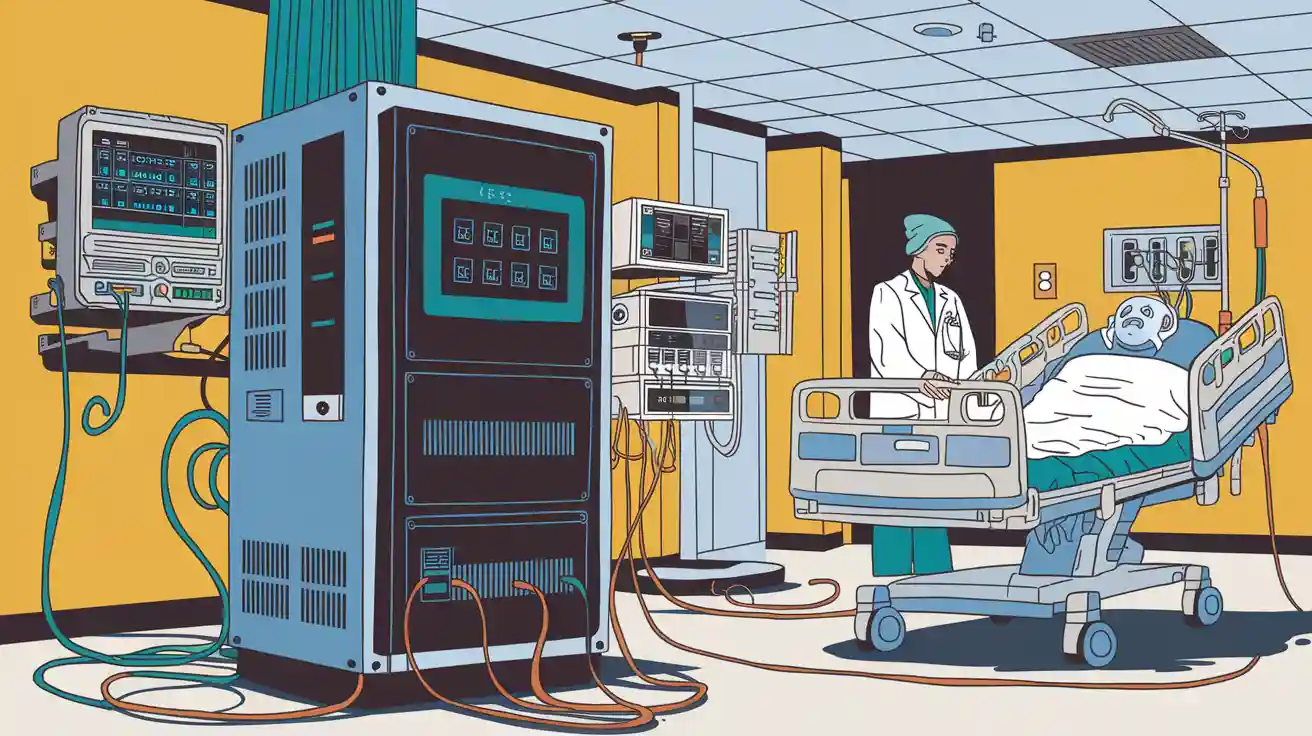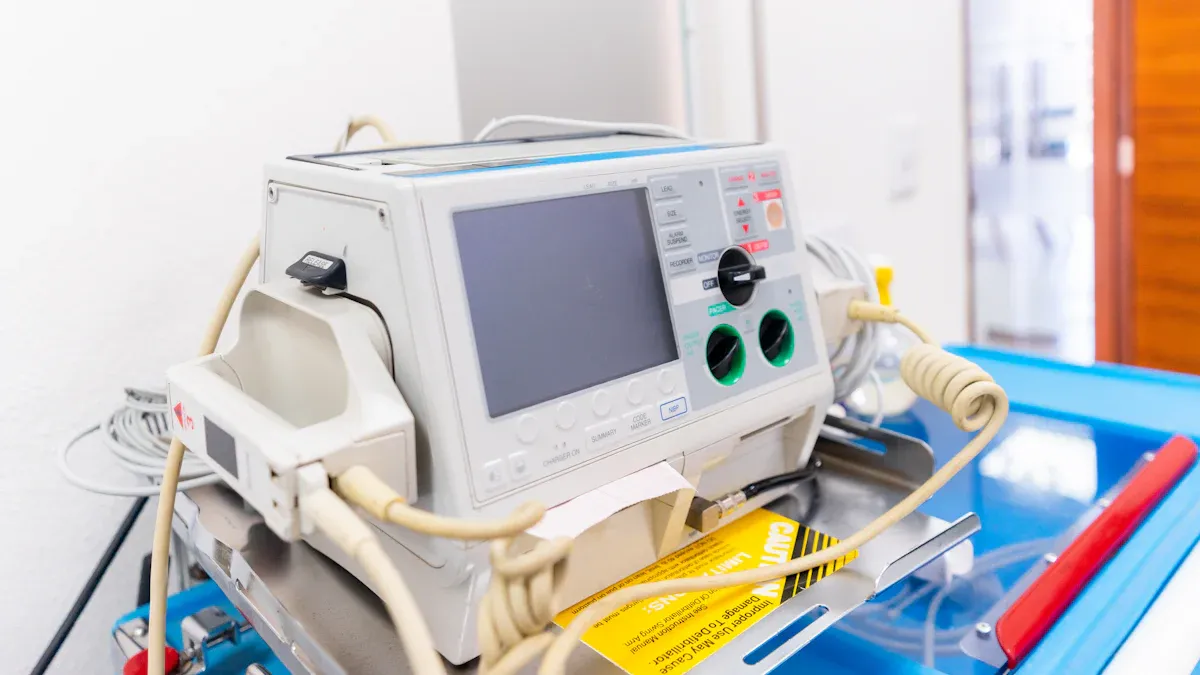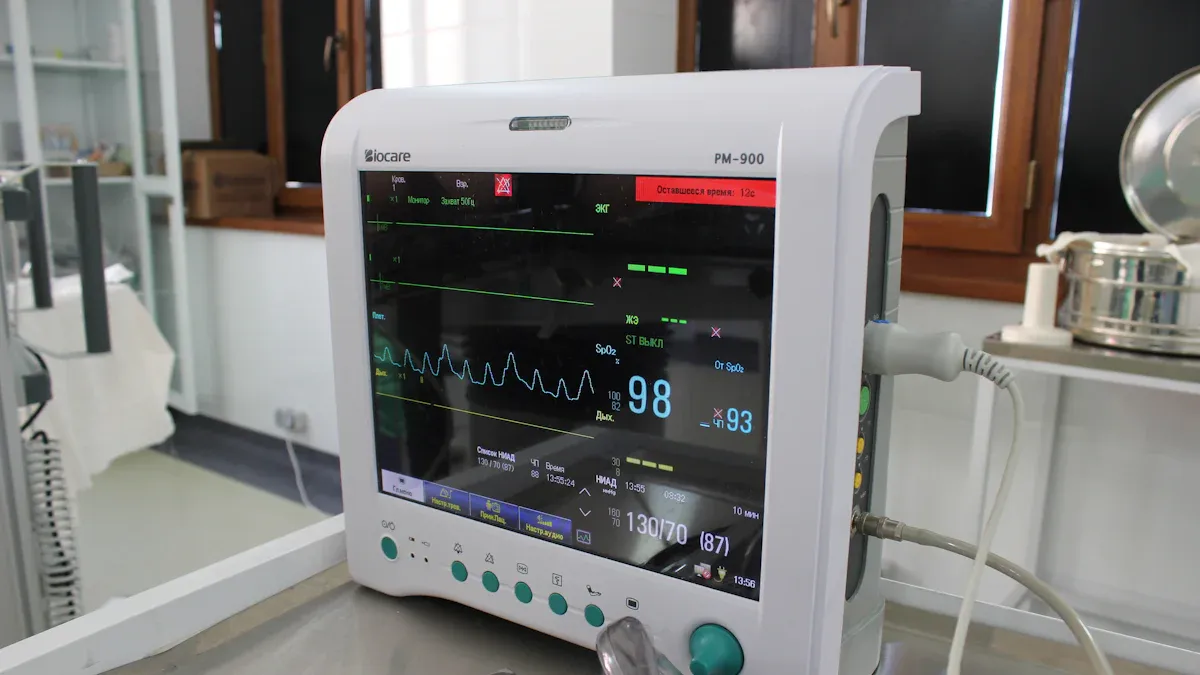
You face a critical challenge in hospital operations: ensuring zero downtime for vital equipment. Hospital-Grade UPS Systems protect patient safety by delivering seamless backup power. Lithium battery technology and strict regulatory compliance drive market growth, with projections reaching $3.2 billion by 2028 and a CAGR exceeding 5%.
Key Takeaways
Hospital-grade UPS systems are essential for ensuring zero downtime of critical equipment, directly impacting patient safety during power outages.
Integrating lithium battery technology into UPS systems offers longer lifespan, faster charging, and reduced maintenance, making it ideal for hospital environments.
Regular maintenance and real-time monitoring of UPS systems are crucial for operational excellence and reliability, helping to prevent unexpected power failures.
Part 1: Hospital-Grade UPS Systems and Zero Downtime

1.1 Impact on Patient Safety
You operate in an environment where every second counts. Hospital-grade UPS systems form the backbone of your emergency power supply, ensuring that critical equipment never loses power. When power outages strike, the consequences extend far beyond inconvenience. You risk patient transfers, which strain resources and can lead to overcrowding at receiving facilities. Critical systems such as ventilators and patient monitors depend on reliable power. Any disruption can jeopardize patient safety, especially during prolonged outages. Backup generators often cannot provide the immediate, seamless transition required for continuous service, increasing the risk of equipment failure.
Note: In level 1 trauma hospitals, even a brief interruption in power can compromise life-saving care. You must guarantee operational continuity to protect your patients and staff.
Evidence Description | Impact on Patient Safety Outcomes |
|---|---|
Power outages can lead to patient transfers, straining resources. | Increased risk of patient safety due to logistical challenges and potential overcrowding at receiving facilities. |
Critical systems like ventilators and monitors depend on reliable power. | Disruptions can jeopardize patient safety and outcomes, especially during prolonged outages. |
Backup generators often insufficient during long outages. | Risks to patient safety increase, as essential medical equipment may fail without adequate power supply. |
1.2 Core Design Principles
You need hospital-grade UPS systems that deliver true power continuity. These systems use online double-conversion technology, which isolates your critical components from power fluctuations and outages. This approach ensures that your critical equipment receives clean, uninterrupted power at all times. You achieve resiliency by designing with redundancy in mind. Multiple UPS units, parallel configurations, and backup battery systems provide layers of protection. You must also consider integration with emergency generators and hospital infrastructure to create a seamless emergency power supply.
Key design principles for hospital-grade UPS systems:
Online double-conversion for zero transfer time
Modular architecture for easy upgrades and scalability
Redundant power paths for maximum resiliency
Integration with emergency generators and hospital systems
You must plan for upgrades and future energy needs. Proper planning ensures that your infrastructure can support new technologies and increased demand. You also need to monitor and maintain your UPS systems to guarantee continuous service and operational continuity.
1.3 Lithium Battery Integration
Lithium battery technology has transformed backup power solutions for hospitals. You benefit from lithium-ion batteries because they last 10-15 years, compared to just 3-5 years for traditional lead-acid batteries. This extended lifespan reduces replacement frequency and lowers total cost of ownership. Lithium batteries charge faster, handle deeper discharge cycles, and require less maintenance. Their compact size and lighter weight make them ideal for space-constrained hospital environments and other sectors such as robotics, security systems, and industrial infrastructure.
Advantages of lithium battery technology in hospital-grade UPS systems:
Lifespan and durability: 10-15 years, reducing replacement and service costs
Efficiency and performance: Faster charging and deeper discharge cycles
Size and space efficiency: Smaller footprint, lighter weight
Maintenance and upkeep: Minimal service requirements
Battery Type | Average Lifespan |
|---|---|
VRLA | 3 to 5 years |
Lithium-ion | 8 to 10 years |
You should select the appropriate lithium chemistry based on your application. For hospital-grade UPS systems, lithium iron phosphate (LiFePO4) offers high cycle life and thermal stability, making it suitable for critical systems. Nickel manganese cobalt oxide (NMC) provides higher energy density, which benefits applications with limited space. You can also find lithium battery solutions in medical imaging, laboratory automation, and emergency power supply systems across the healthcare sector.
Tip: When planning upgrades or new installations, always evaluate your energy resiliency and backup requirements. Lithium battery integration supports long-term planning and ensures your hospital infrastructure meets evolving energy needs.
Part 2: Infrastructure and Compliance in Hospital UPS Design

2.1 Redundancy and System Architecture
You must prioritize resiliency when designing hospital UPS systems. Redundant architecture ensures that critical equipment in level 1 trauma hospitals remains operational during power outages. You achieve power continuity by deploying parallel UPS units and multiple energy sources. This approach supports upgrades and future planning, allowing you to scale infrastructure as your hospital grows. Modular design simplifies maintenance and enables quick replacement of faulty components, minimizing downtime. You should evaluate system architecture regularly to align with evolving hospital infrastructure and emergency power supply requirements.
2.2 Battery Selection and Backup Power Solutions
Selecting the right battery technology is essential for hospital resiliency. Lithium battery systems offer instant backup power delivery, supporting sensitive medical equipment and robotics. You benefit from their compact size and scalability, which fit well within hospital infrastructure. Battery management systems (BMS) optimize performance and safety; learn more at BMS and PCM. When planning upgrades, consider lithium iron phosphate (LiFePO4) for high cycle life and thermal stability, or nickel manganese cobalt oxide (NMC) for higher energy density. You must also address conflict minerals in your supply chain, see Conflict Minerals Statement.
Lithium Battery Chemistry | Cycle Life | Energy Density | Thermal Stability | Application Scenario |
|---|---|---|---|---|
LiFePO4 | High | Moderate | Excellent | Medical, robotics, infrastructure |
NMC | Moderate | High | Good | Security systems, industrial, consumer electronics |
Backup power solutions include both battery systems and emergency generators. Battery backup systems provide instant power and support upgrades, while fuel generators offer extended runtime for prolonged outages. You must balance cost, reliability, and scalability:
Factor | Battery Backup Systems | Fuel Generators |
|---|---|---|
Cost | Higher upfront cost, but lower maintenance | Lower upfront cost, but higher ongoing costs |
Reliability | Instant power delivery, suitable for sensitive equipment | Longer runtime, but may take time to start |
Scalability | Compact and scalable, but limited by battery capacity | Can scale with additional units, but requires space |
2.3 Integration with Hospital Infrastructure
You must integrate UPS systems seamlessly with hospital infrastructure and emergency generators. This integration ensures immediate backup during power outages, reducing downtime and improving response times. UPS systems regulate voltage, protecting sensitive devices in medical, security, and industrial sectors. You should coordinate upgrades and planning with facility management to maintain resiliency and support future energy needs.
Tip: Regularly test your emergency power supply and backup systems to guarantee operational continuity.
2.4 Regulatory Standards
You must comply with strict regulatory standards when designing hospital UPS systems. These standards ensure resiliency and safety for patients and staff. Key regulations include NFPA 70, NEC Article 517, NFPA 110, NFPA 99, and FGI Guidelines. Each standard addresses different aspects of hospital infrastructure, emergency power supply, and energy management.
Regulatory Standard | Description |
|---|---|
NFPA 70 | Requires hospitals to have two independent power sources for reliability: a normal source and an alternate source. |
NEC Article 517 | Defines ‘essential electrical system’ and applies specifically to hospitals, ensuring emergency systems are legally required. |
NFPA 110 | Defines components of emergency power systems, including emergency power supply and systems necessary for operation. |
NFPA 99 | Establishes criteria for health care services to minimize hazards related to fire, explosion, and electricity. |
FGI Guidelines | Provides guidelines for design and construction of health care facilities, addressing specific needs. |
You should incorporate these standards into your planning and upgrades to maintain compliance and support hospital resiliency.
Part 3: Future-Proofing and Operational Excellence
3.1 Scalability for Hospital Growth
You must plan for growth when designing UPS systems for your hospital. As your facility expands, your electrical infrastructure must adapt. Low Voltage (LV) switchboards support scalability, allowing you to expand and integrate new systems with ease. This adaptability ensures your hospital infrastructure remains resilient and ready for future upgrades. You can meet the demands of level 1 trauma hospitals by planning for increased capacity and integrating new technologies. Effective planning helps you maintain continuity and avoid disruptions during expansions or renovations.
3.2 Maintenance and Monitoring
You need a proactive approach to maintenance for your emergency power supply. Regular inspections, battery testing, and component checks keep your backup power solutions reliable. Real-time monitoring identifies early warning signs, such as voltage fluctuations or battery issues, so you can address problems before they cause power outages. This approach supports resiliency and operational excellence. Use the following maintenance schedule to guide your planning:
Maintenance Task | Frequency |
|---|---|
Regular inspections by qualified engineers | At least twice a year |
Battery testing and replacements | As needed |
Checking capacitors, fans, and components | Regularly |
Firmware and software updates | Regularly |
Load testing | Regularly |
Cleaning and environmental checks | Regularly |
Real-time monitoring also improves energy efficiency and reduces operational costs, supporting your long-term goals.
3.3 Staff Training and Sustainability
You must invest in staff training to ensure proper operation of UPS systems and emergency generators. Well-trained teams respond quickly to emergencies and perform routine maintenance, which increases resiliency. Long-term planning should include sustainability initiatives, such as adopting lithium battery technology and energy-efficient practices. For more on sustainable strategies, see Our Approach to Sustainability. By focusing on sustainability, you support reliable backup power solutions and prepare your hospital for future challenges in medical, robotics, security system, and industrial sectors.
You strengthen hospital resiliency by following these steps:
Comply with safety certifications and guidelines.
Identify equipment that cannot lose power.
Determine required outage coverage duration.
Consider silent operation and remote monitoring.
Invest in lithium battery technology for reliable infrastructure.
Prioritize planning for future growth and regulatory compliance.
FAQ
What makes lithium battery technology ideal for hospital UPS systems?
You gain longer lifespan, faster charging, and higher reliability. Lithium batteries support critical medical, robotics, and infrastructure applications, ensuring uninterrupted power for essential equipment.
How do you maintain UPS systems for maximum reliability?
You schedule regular inspections, test batteries, and monitor system performance. Proactive maintenance reduces downtime and extends the life of your backup power solutions.
Can lithium batteries support other sectors beyond healthcare?
You can deploy lithium battery systems in robotics, security systems, industrial, and consumer electronics sectors. These batteries deliver high performance and scalability for diverse applications.






